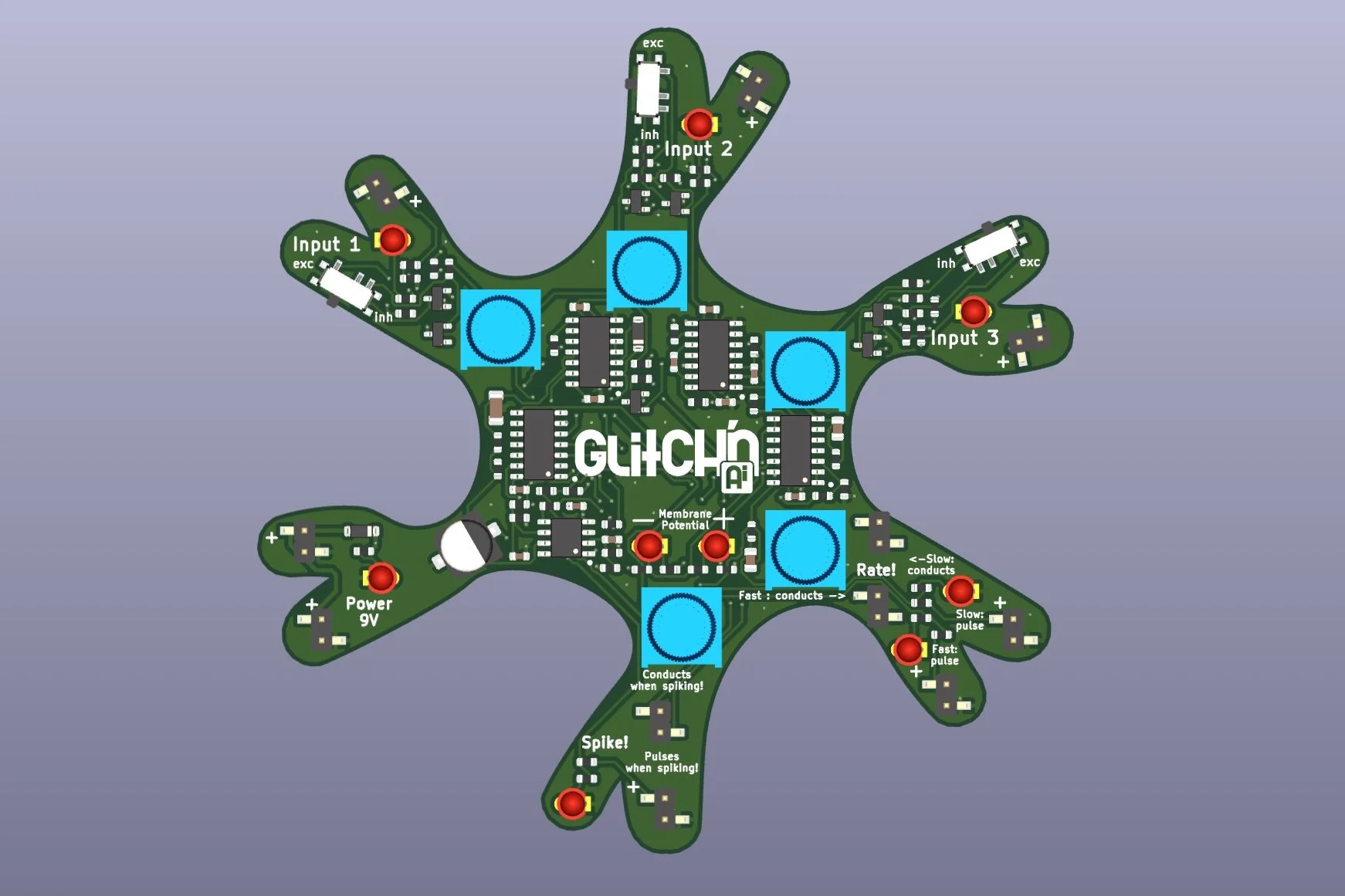Glitch’n AI
October 2025: We are excited to announce that our new initiative, Glitch’n AI, has received seed funding for a pilot study.
Glitch’n AI extends the original Glitch’n circuit-bending course into AI literacy by introducing spiking neural networks through a small neuromorphic add-on called the GAIN module. GAIN connects directly to the CMOS logic circuits students build (using Schmitt triggers, dividers, shift registers, and multiplexers) and lets them adjust weights, thresholds, and timing behavior in real time. The aim is to make neural computation something students can hear, handle, and modify rather than something abstract, screen-based, or software-only.
The project builds on ongoing community-centered work with youth and keeps the same emphasis on tinkering, glitch techniques, and improvisation. The HOMAGO framework continues to guide movement from observation into deeper involvement. As Glitch’n AI develops, student will take on “peer-auditor” roles, trying out each other’s circuit-embedded neurons and talking through what they see happening.
During the development phase, Glitch’n Teaching Fellows work through multiple GAIN prototypes, learning about analog computing as well as schematic and board design. Their feedback and ongoing prototyping will help shape a new Glitch’n AI supplemental curriculum that continues the circuit bending course. Students can chain GAIN modules together to from neural networks, but a single module is also sufficient for conveying key learning goals.
Workshops with CTRL alumni form the implementation phase. Participants revisit the familiar Glitch’n circuits and bring the GAIN modules into the mix to explore spiking events, timing, pattern formation, and unexpected behaviors. Think-aloud sessions follow each workshop to document how students explain their reasoning while they patch, listen, and adjust circuits.
Some anticipated outcomes include:
Expanded ways for teens and young adults to engage with AI concepts through the same creative, embodied methods used in Glitch’n
Undergraduate Teaching Fellows gaining experience with neuromorphic hardware, curriculum development, neural networks, and student mentoring
Curriculum elements that link CMOS logic, glitch practices, and neural computation
Glitch’n AI keeps the overall sensibility of the original project—open-ended, experimental, and grounded in community participation—while extending it into neuromorphic exploration. The pilot continues to generate materials, feedback, and collaborative structures that support the growth of the Glitch’n program in Phoenix, Arizona.
A supplementary hardware module designed by Glitch’n Director Seth Thorn, which integrates with student-built CMOS circuits. Modules can be chained or used individually to add creative features discovered through tinkering. Students directly adjust weights, firing thresholds, and other parameters to elicit novel behaviors and modulations.



